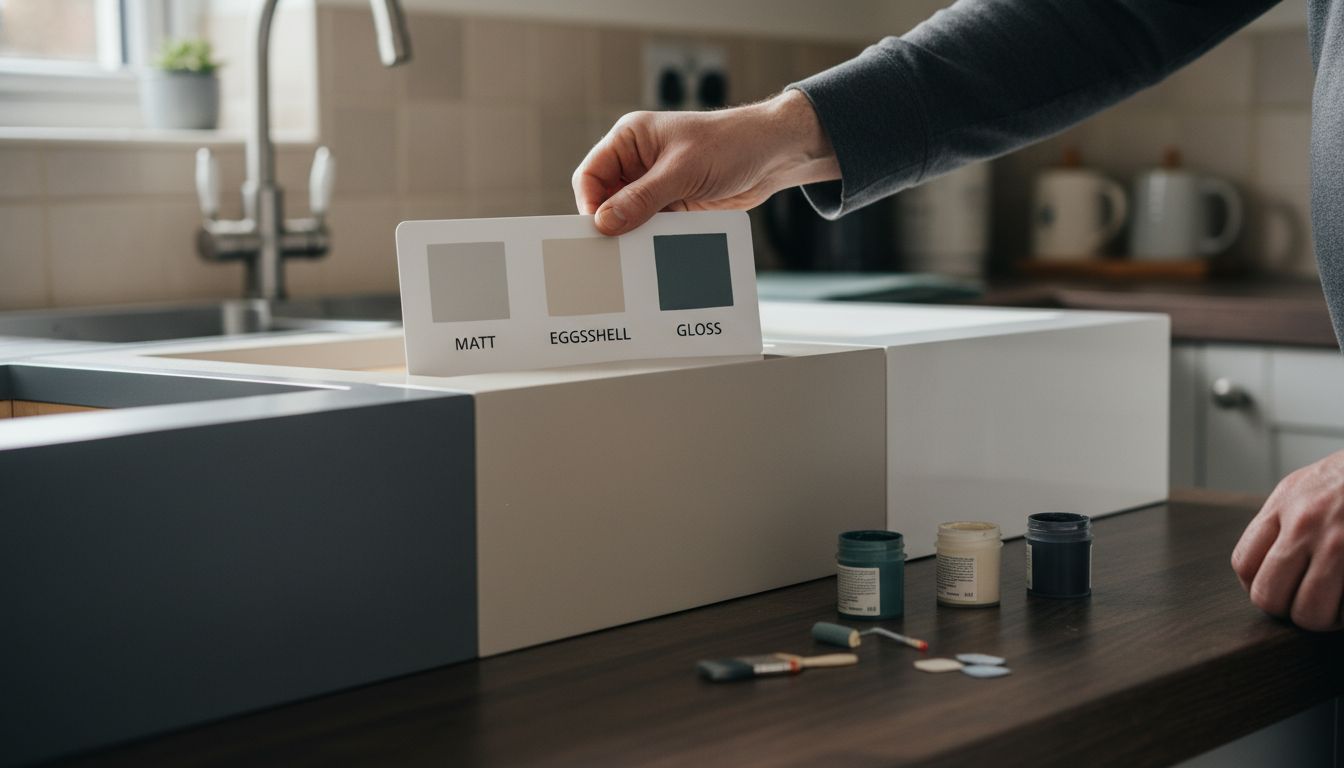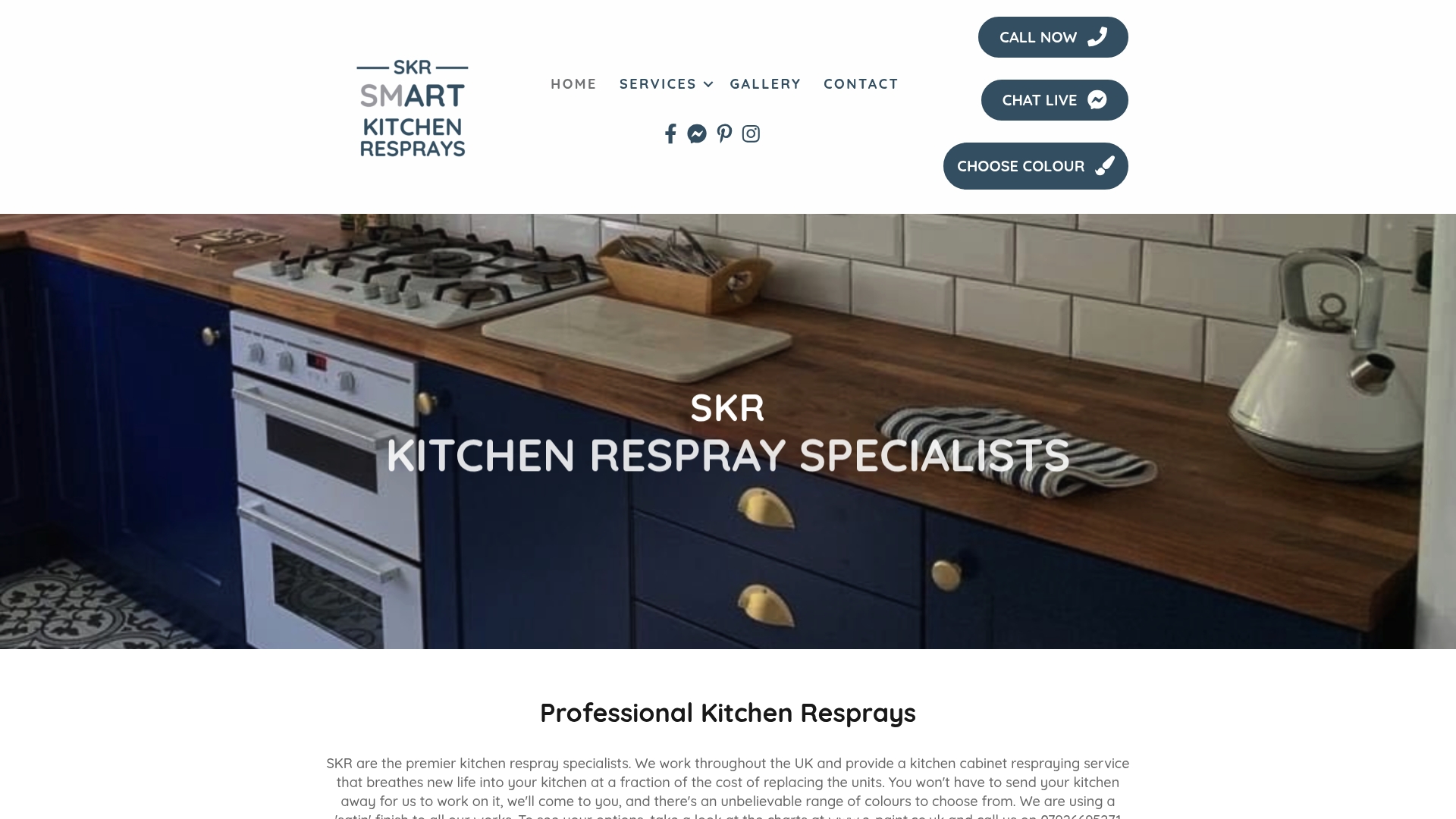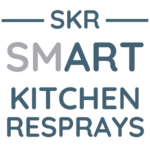Kitchen Paint Touch-Up Explained: Complete UK Guide
Did you know that nearly 70 percent of homeowners notice visible chips or scuffs in their kitchen paint within the first two years? Keeping your kitchen looking fresh can be a real challenge, especially with daily wear and tear. Understanding the best ways to repair small imperfections can save money, time, and hassle while preserving the space you love. Discover how specific repair methods, matching paints, and careful application can restore your kitchen’s beauty and durability.
Table of Contents
- Defining Kitchen Paint Touch-Up Methods
- Types of Kitchen Surfaces and Paints
- Step-By-Step Touch-Up Process Explained
- Choosing the Right Paint and Tools
- Common Mistakes and How to Avoid Them
- Costs, Durability, and When to Call Experts
Key Takeaways
| Point | Details |
|---|---|
| Effective Touch-Up Techniques | Use strategic methods for localized kitchen repairs, focusing on careful preparation and controlled application to maintain aesthetics. |
| Choosing the Right Paint | Selecting the correct paint type and finish is crucial, with eggshell finishes offering a balance of durability and aesthetic appeal. |
| Understanding Costs and Interventions | DIY touch-ups are cost-effective for minor damages, but professional help is recommended for extensive repairs or complex issues. |
| Common Mistakes to Avoid | Avoid thick layers, inadequate surface preparation, and failure to match colors to ensure successful touch-ups. |
Defining Kitchen Paint Touch-Up Methods
Kitchen paint touch-ups are strategic repair techniques designed to restore small areas of damage on kitchen surfaces without requiring a full repaint or replacement. According to research from Understanding Kitchen Touch-Ups: A Homeowner’s Guide, these methods help homeowners maintain their kitchen’s aesthetic appeal efficiently and cost-effectively.
Touch-up paint sets typically include a small pot of precisely colour-matched paint and a hardener, which must be mixed before application. As noted by kitchen experts, these sets are specifically engineered for different kitchen finishes – matt painted kitchens often receive complimentary touch-up paint kits with a catalyst that needs pre-mixing. The primary goal is addressing minor imperfections like:
- Small paint chips
- Surface scuffs
- Localised scratches
- Subtle paint wear
Successful kitchen paint touch-ups require careful preparation and precise application. Homeowners should clean the damaged area thoroughly, ensure proper paint matching, and apply thin, controlled layers to achieve seamless restoration. While DIY touch-ups can be effective for minor damages, complex or extensive surface repairs might necessitate professional intervention from specialist kitchen respray services.
Types of Kitchen Surfaces and Paints
Choosing the right paint type is fundamental to achieving a durable and visually appealing kitchen finish. As experts highlight in The Essential Guide to Paint in Kitchen Renovation, different surfaces and paint bases dramatically impact the final result and long-term performance of your kitchen’s appearance.
When selecting kitchen paints, homeowners should consider multiple factors. According to research from Living Etc, eggshell finishes are particularly recommended, offering 10-25% sheen that strikes an ideal balance between aesthetics and practicality. These paints provide:
- Subtle, soft appearance
- Easy cleaning capabilities
- Moderate light reflection
- Good durability for high-traffic areas
Modern kitchen paint technologies have significantly advanced, with matt finishes now offering impressive performance previously unavailable. Professional painters suggest evaluating paint characteristics like:
Here’s a summary of popular kitchen paint finishes and their key attributes:
| Finish Type | Appearance | Durability | Recommended Areas |
|---|---|---|---|
| Matt | Soft, low sheen | Moderate | Walls Ceilings |
| Eggshell | Subtle sheen | Good | Cabinets High-traffic zones |
| Semi-gloss | Noticeable shine | Very good | Woodwork Door frames |
| Specialist Emulsion | Variable (matt/eggshell) | Excellent (moisture resistant) | Kitchens Bathrooms |
- Base material (oil-based vs water-based)
- Finish type (matt, eggshell, semi-gloss)
- Durability ratings
- Moisture and stain resistance
While DIY enthusiasts can tackle many painting projects, complex surface treatments might require professional intervention to ensure optimal results and longevity.

Step-By-Step Touch-Up Process Explained
Successful kitchen paint touch-ups require meticulous preparation and precise application. According to Kitchen Painting vs Kitchen Spraying Explained, the process involves several critical steps to ensure a seamless repair.
Before beginning, experts recommend thorough preparation. As noted by Better Kitchens, you should first verify the correct paint range and colour. Work in good lighting and ensure the repair area is:
- Completely dry
- Free from grease
- Cleaned thoroughly
- Carefully inspected for damage extent
According to DIY Kitchens’ technical guidance, the actual touch-up process follows a precise mixing and application protocol. The recommended procedure involves:
- Shake or stir the paint thoroughly
- Mix paint with hardener (4 parts paint to 1 part catalyst)
- Blend mixture completely
- Test colour match on an inconspicuous area
- Apply using a fine brush with controlled, thin strokes
Professional painters emphasise patience during application. The touch-up paint typically requires approximately 60 minutes to dry completely. While minor repairs can be managed by homeowners, complex or extensive damage might necessitate professional intervention to achieve a flawless finish.
Choosing the Right Paint and Tools
Selecting appropriate paint and tools is critical for achieving professional-grade kitchen touch-ups. In Kitchen Painting vs Spraying: Complete Guide UK, experts emphasise the importance of matching paint characteristics to specific kitchen environments and surface requirements.
For kitchen surfaces, specialist emulsion paints offer unique advantages. According to Home Building, Johnstone’s Kitchen and Bathroom Emulsion Paint is specifically formulated to provide protection in moisture-prone areas, making it particularly suitable for kitchens with limited ventilation. Key considerations when selecting kitchen paint include:
- Moisture resistance
- Condensation protection
- Washability
- Surface compatibility
Modern intelligent paint technologies provide remarkable versatility. As Little Greene highlights, breakthrough water-based paints now offer quick application and complete washability across multiple surfaces including:
- Plaster
- Woodwork
- Radiators
- Kitchen cabinetry
Professional painters recommend investing in high-quality tools like fine-bristled brushes, paint mixers, and colour-matched touch-up kits to ensure precise and durable repairs. While DIY enthusiasts can manage minor touch-ups, complex restoration might require professional intervention to guarantee optimal results.
Common Mistakes and How to Avoid Them
Kitchen paint touch-ups require precision and careful technique. In the Best Paint for In-Situ Kitchens – Expert Comparison 2025, professionals highlight the most frequent errors homeowners make during repair processes.
According to Better Kitchens, the most critical touch-up mistake is attempting extensive repainting instead of localised repair. Their expert guidance recommends:
- Focusing on small, precise touch-ups
- Applying thin, multiple coats
- Wiping excess paint immediately
- Keeping accurate colour and range records
DIY Kitchens warns about specific finish-related challenges. For instance, gloss painted kitchens present unique difficulties, often requiring specialised touch-up pens that can be costly (approximately £10 per colour). Additional common mistakes include:
- Applying thick, heavy paint layers
- Neglecting surface preparation
- Using incorrect paint type
- Failing to match colour precisely
- Ignoring manufacturer’s mixing instructions
Professional painters emphasise that while minor touch-ups can be managed by homeowners, complex repairs demand expert intervention. Patience, meticulous preparation, and using the right tools are crucial to achieving a seamless, professional-looking finish.
Costs, Durability, and When to Call Experts
Understanding the financial and practical implications of kitchen paint touch-ups is crucial for homeowners. In Kitchen Painting vs Spraying: Complete Guide UK, professionals break down the nuanced considerations of repair costs and durability.
According to Home Building, modern kitchen paints like Johnstone’s Kitchen and Bathroom Emulsion offer exceptional value with characteristics such as:
- Good coverage
- Low odour
- Easy application
- Minimal equipment requirements
Living Etc recommends eggshell finishes with 10-25% sheen, which provide an optimal balance between aesthetic appeal and practical durability. Cost considerations for touch-ups typically range from:
- Minor repairs: £10-£30 (DIY)
- Professional touch-ups: £50-£150
- Comprehensive respray: £300-£800
Professional intervention becomes necessary when touch-ups involve:
- Extensive surface damage
- Colour mismatches
- Complex finish requirements
- Structural paint deterioration
While DIY enthusiasts can manage small repairs, complex kitchen paint restoration demands expert skills to ensure seamless, long-lasting results.
Restore Your Kitchen’s Beauty with Expert Touch-Ups and Resprays
Small chips, scratches, or faded paint can make your kitchen look tired and worn out. Tackling these issues alone can feel overwhelming, especially when precise colour matching and delicate application are involved. The challenge of applying the right finish—be it matt or eggshell—and avoiding common mistakes like thick paint layers or poor surface prep can leave you disappointed. If you want to avoid costly errors and enjoy a flawless finish, professional help is the key.

Explore our expert kitchen respray services designed to bring your kitchen back to life without the inconvenience of a full renovation. Visit our Uncategorized Archives – WordPress to learn more about the techniques we use. Don’t let minor damage diminish your kitchen’s charm. Act now to benefit from our in-situ respray solutions that deliver durability, perfect colour matching, and a fresh, long-lasting appearance. Find out how we can help you by visiting our homepage and transform your kitchen today.
Frequently Asked Questions
What are the common methods for kitchen paint touch-ups?
Kitchen paint touch-ups typically involve using a colour-matched touch-up paint set that includes paint and a hardener. Common repair techniques are aimed at restoring small areas of damage, such as chips, scuffs, and scratches.
How do I ensure proper paint matching for touch-ups?
To ensure accurate paint matching, always verify the correct paint range and colour before starting your touch-up. Testing the paint on an inconspicuous area can help confirm the match before application.
What type of paint finish is best for kitchen touch-ups?
Eggshell finishes are highly recommended for kitchen touch-ups due to their subtle sheen, durability, and easy cleaning capabilities. Other finishes like semi-gloss and specialist emulsions may also be suitable depending on the specific area being repaired.
When should I consider professional help for touch-ups?
Professional help should be sought when there is extensive surface damage, colour mismatches, or complex finish requirements that go beyond simple touch-ups. This ensures a seamless and durable restoration of your kitchen surfaces.
